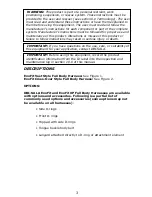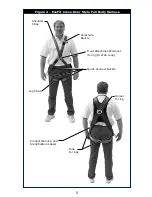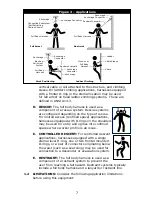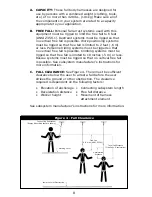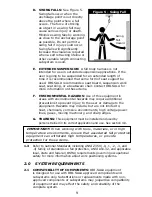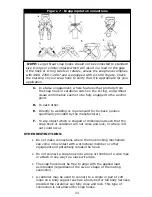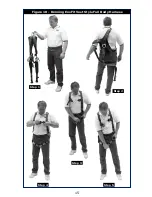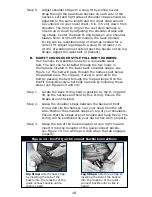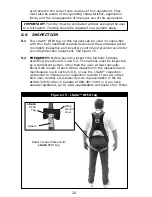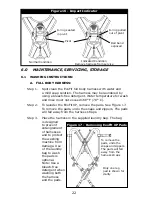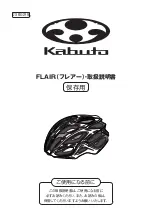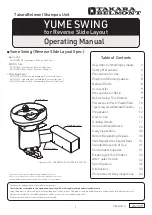
11
NOTE:
Large throat snap hooks should not be connected to standard
size D‑rings or similar objects which will result in a load on the gate
if the hook or D‑ring twists or rotates, unless the snap hook complies
with ANSI Z359.1‑2007 and is equipped with a 3,600 lb gate. Check
the marking on your snap hook to verify that it is appropriate for your
application.
C.
In a false engagement, where features that protrude from
the snap hook or carabiner catch on the D-ring, and without
visual confirmation seems to be fully engaged to the anchor
point.
D.
To each other.
E.
Directly to webbing or rope lanyard for tie-back (unless
specifically provided by the manufacturer).
F.
To any object which is shaped or dimensioned such that the
snap hook or carabiner will not close and lock, or where roll-
out could occur.
OTHER RESTRICTIONS:
• Do not make connections where the hook locking mechanism
can come into contact with a structural member or other
equipment and potentially release the hook.
• Do not connect a snap hook into a loop or thimble of a wire rope
or attach in any way to a slack wire rope.
• The snap hook must be free to align with the applied load
as intended (regardless of the size or shape of the mating
connector).
• A caribiner may be used to connect to a single or pair of soft
loops on a body support such as a body belt or full body harness,
provided the carabiner can fully close and lock. This type of
connection is not allowed for snap hooks.
Figure 7 - Inappropriate Connections



